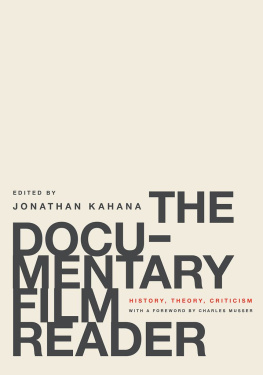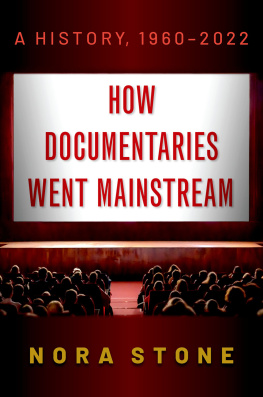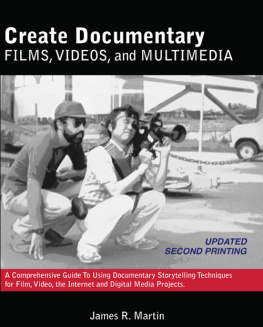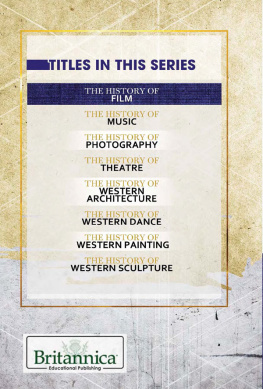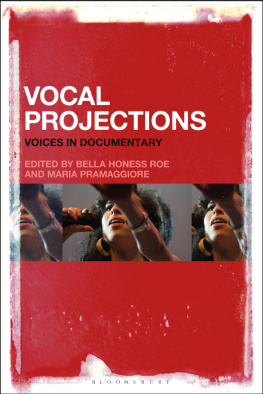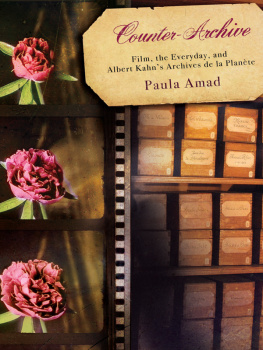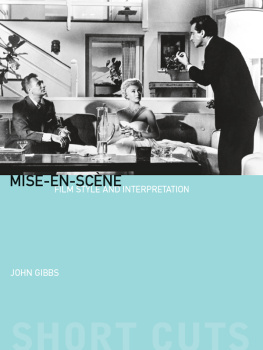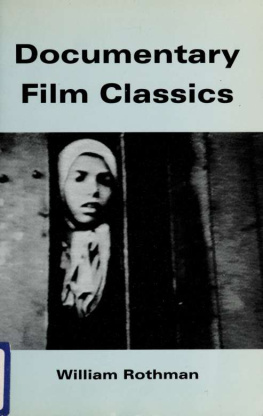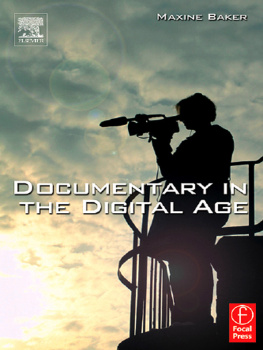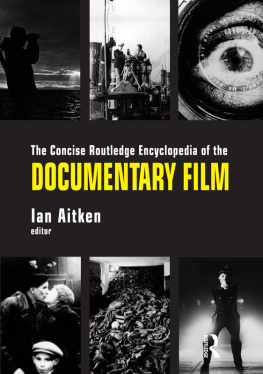THE DOCUMENTARY FILM READER

Oxford University Press is a department of the University of Oxford. It furthers the Universitys objective of excellence in research, scholarship, and education by publishing worldwide.
OxfordNew York
AucklandCape TownDar es SalaamHong KongKarachi
Kuala LumpurMadridMelbourneMexico CityNairobi
New DelhiShanghaiTaipeiToronto
With offices in
ArgentinaAustriaBrazilChileCzech RepublicFranceGreece
GuatemalaHungaryItalyJapanPolandPortugalSingapore
South KoreaSwitzerlandThailandTurkeyUkraineVietnam
Oxford is a registered trademark of Oxford University Press in the UK and certain other countries.
Published in the United States of America by
Oxford University Press
198 Madison Avenue, New York, NY 10016
Oxford University Press 2016
All rights reserved. No part of this publication may be reproduced, stored in a retrieval system, or transmitted, in any form or by any means, without the prior permission in writing of Oxford University Press, or as expressly permitted by law, by license, or under terms agreed with the appropriate reproduction rights organization. Inquiries concerning reproduction outside the scope of the above should be sent to the Rights Department, Oxford University Press, at the address above.
You must not circulate this work in any other form and you must impose this same condition on any acquirer.
Library of Congress Cataloging-in-Publication Data
The documentary film reader : history, theory, criticism / edited by Jonathan Kahana.
pages cm
Includes bibliographical references and index.
ISBN 9780199739646 (cloth) ISBN 9780199739653 (pbk.) ISBN 9780190226541 (ebook) eISBN 9780190459321 1.Documentary filmsHistory and criticism.I.Kahana, Jonathan, 1966
PN1995.9.D6D5755 2015
070.18dc23
2015013454
CONTENTS
CHARLES MUSSER,
JONATHAN KAHANA,
The editorial staff at Oxford University Press who saw this book through from conception to productionShannon MacLachlan, Stephen Bradley, and, most of all, Brendan ONeillhave been patient, persistent, and encouraging throughout the process, and I thank them sincerely for their confidence in such a large and complex project. I am also very grateful to Natalie Foster and Jayne Fargnoli for their valuable editorial input at early stages of the project, when it was still looking for a home.
In addition to Oxford University Press, a number of sources provided financial support toward the costsespecially the fees paid to copyright owners, in some cases scandalously high, to reprint previously published worksof producing this volume. For their generosity, I thank the Arts Research Institute in the Division of the Arts at the University of California, Santa Cruz (UCSC); Scott Brandt, Vice Chancellor for Research in the Office of Research at UCSC; the Office of Sponsored Programs at New York University (NYU), through its Research Challenge Fund Emergency Support Program; and the Department of Cinema Studies at NYU, which funded a series of graduate research assistants, including Ian Hetherington, who provided various kinds of help. In the Tamiment Library at NYU, Donna L. Davey and Peter Meyer Filardo provided access to unpublished papers in the Jay Leyda collection.
Among the many scholars, doctoral students, and colleagues who have influenced and contributed to this book, Charlie Musser has my deepest debt of gratitude, for long, formative, and spirited conversations early in the process of forming the table of contents: his impact on my thinking about film history is visible throughout. Research assistant is technically correct but too perfunctory a title to fully describe the degree and kind of contributions made to this book by Paul Fileri, who, over several years, suggested, located, reconsidered, and trouble-shot so much of the material collected here that I sometimes thought of him as a co-producer, and equally often as the books intended user. Blind and non-blind peer reviewersmost thoughtfully, Roger Hallas, Jeffrey Skoller, Charles Wolfe, and several anonymous othersshaped and improved the conception of the books scope, audience, and function. On various editorial, archival, administrative, and linguistic questions I frequently turned to, and received sage counsel from, colleagues around the office and around the world: Richard Allen, Kees Bakker, Brad Evans, Sandy Flitterman-Lewis, Mick Gidley, Jill Godmilow, Jenny Horne, Dana Polan, Michael Renov, Marita Sturken, Steven Ungar, Tom Waugh, Mark Williams, Tami Williams, Brian Winston, and Arlene Zimmerle. Masha Salazkina spent many hours on the translation of some unpublished Eisenstein notes we decided in the end not to use in this edition. Some of the excellent doctoral students at NYUincluding Brady Fletcher, Leo Goldsmith, Anuja Jain, Martin Johnson, Ohad Landesman, Laliv Melamed, Michael Talbott, and Jennifer Zwarichoffered valuable opinions on the material in their particular areas of expertise. Alex Johnston assisted with the selection and production of illustrations. And I am especially grateful to those authors who generously responded to my invitation to rethink sentences originally published years ago. Trust that any cuts we had to maketo those selections, and of the scores of others left on the cutting-room floorhurt me more than they hurt you.
If publics are constructed and addressed by individual films and the critical apparatuses that surround them, more sustained and multi-dimensional publics are often created around groups of documentarieseither cycles of films or specific genres such as the courtroom documentary (from Errol Morriss The Thin Blue Line [1988] to, most recently, Alex Gibneys Death Row Stories [2014]). Finally, as Kahana has pointed out, the relationship between individual examples and broad generalizations, between individual documentaries and documentary theory, criticism and practice are crucial. Each documentary engages a field of antecedents with varying degrees of originality and transgression. (Errol Morris, for one, has become a proponent of a fuck you theory of art, which is certainly evident in his films.) In this regard, The Documentary Film Reader performs the critical task of sketching out the ground against which individual films or groups of films can be contextualized and new films measured. With all the necessary qualifications, this collection of essays and documents inevitably proposes a canon of films and texts either as a starting point for further exploration or as a handy reminder of what one figure in this field of study finds particularly significant.
To assemble an anthology such as The Documentary Film Reader at this moment, when documentary itself is still absorbing the tremendous impact of the digital revolution, requires a certain audacity. In this regard, Kahanas use of the term film in the title is strategic: it limits the reach of his anthology while enabling him to establish many of the contours of American documentary from the early 1900s until almost the present day. Shortly after the debut of projected motion pictures, exhibitors such as E. Burton Holmes began to integrate short films into their illustrated lectures, which displayed a series of lantern slides (projected still photographs). Though they were often labeled travel lectures, these took on a wide range of subjects, as a Washington Post review of Holmess lecture on the Russo-Japanese War, Port Arthur: Siege and Surrender

